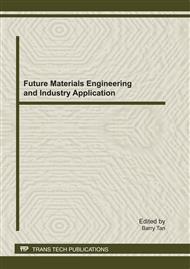p.260
p.263
p.267
p.272
p.280
p.287
p.292
p.299
p.305
Microbial Carbonate Mineralization as an Improvement Method for Durability of Concrete Structures
Abstract:
Biodeposition treatment had been proposed as alternative techniques for improvement in the durability of concrete structures. Laboratory experiments were conducted by bacterially mediated carbonate precipitation on the surface and subsurface of specimens of concrete. Some properties of specimens and crystal, such as the crystal phase, morphology and growth of the crystal deposited on specimens, water penetration, the resistance towards carbonation of concrete and so on, were analyzed by XRD, SEM, water absorptivity test and concrete accelerated carbonation test. Some efficiencies of biodeposition treatment for were investigated by experiment. Results show that the mineral crystal deposits uniformly on the surface and subsurface of specimens, phases of crystal are calcite and vaterite. Biodeposition effectively reduces capillary water uptake and leading to carbonation rate constant decreased by 25~40%. Bacterially mediated carbonate mineralization can be an ecological and novel alternative for improvement in the durability of concrete structures.
Info:
Periodical:
Pages:
280-286
Citation:
Online since:
October 2011
Authors:
Keywords:
Price:
Сopyright:
© 2012 Trans Tech Publications Ltd. All Rights Reserved
Share:
Citation:


